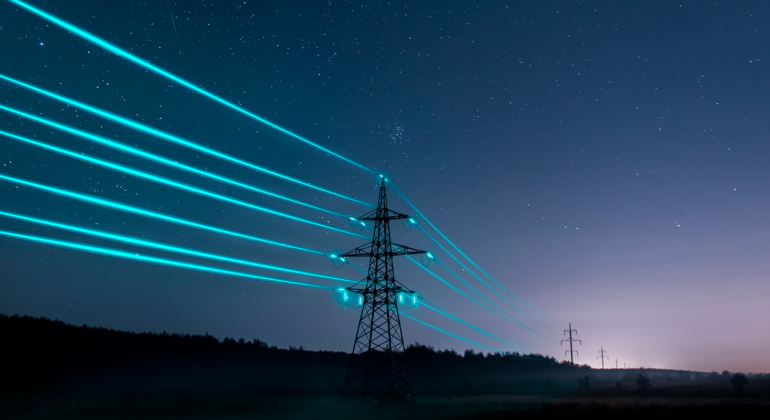Food. Water. Shelter. While these three things are essential to human life, they are often taken for granted in developed countries. But the reality is that more than 800 million people – approximately 10% of the world’s population – are hungry. Between 2019 and 2022 alone, the number of undernourished people grew by 150 million. With a rising world population, climate change, and excessive food consumption in developed countries, the future of global food security is bleak. Or is it?
Artificial intelligence (AI) may be the solution that scientists and farmers have been searching for to meet growing food demands. We are closer than ever to realizing a future in which systems will dramatically increase crop yields and improve the quality of food that people consume around the planet, while also fostering sustainable best practices.
OBSTACLES IN STANDARD AGRICULTURE PRACTICES
While we try to prioritize sustainability in our everyday lives, industrialized farming continues to devastate our natural world, often disproportionately impacting underdeveloped countries. Toxic farm chemicals such as pesticides and fertilizers pollute our freshwater resources, air, and soil, and our natural resources are dwindling.
It’s true – pesticide and soil management, plant diseases, and many other obstacles pose serious threats to optimal crop yield and the overall quality of our food. But the world needs to prioritize more sustainable agriculture if we want to have a fighting chance against climate change. This means reducing water use, reducing pesticide use, prioritizing soil health, and decreasing crop waste. Unfortunately, with a world population predicted to reach 9.7 billion by 2050, pesticides, fertilizers, and other environmentally harmful agricultural practices have become the go-to solution for ensuring increased yields to meet the needs of the growing population.
AI AND AG: SMARTER COMPUTERS FOR SMARTER GROWING
Before we dive into the real-life applications of AI in agriculture, let us talk about why this technology holds such positive potential in the farming sector. AI is targeting all industries, but it is most successful when applied to areas with large and complex data sets. Think about how multiple factors affect crop yield and quality: plant variety selection, water intake, soil health, sun exposure, air quality, seed vitality, just to name a few. AI’s ability to analyze and find correlations within such colossal data sets provide an extraordinary opportunity to shine in agriculture.
You may be surprised to learn that a handful of companies are already using AI for crops. While these “smart farms” look a bit like a scene from a movie set hundreds of years in the future, the future is already here!
What does AI implementation in agriculture look like? Let us start with crop yield optimization. As we said, farmers consider several factors when attempting to maximize crop production. Some farming companies are moving indoors to increase productivity and the overall yield of vitamin-rich crops. Using sensors, AI systems expose plants to different intensities and colors of light, different amounts of water intake, different ambient air temperatures, different humidity levels, and different soil compositions, analyzing the success of each to determine the optimal parameters for each plant species to flourish. These sensors can also be used outdoors to trigger water for crops when there is a lack of rain or based on weather patterns, conserve water as needed.
Next up – pesticide and herbicide management. Traditionally, pesticides and herbicides are distributed over entire crop fields to kill pests, rodents, and unwanted plants like weeds. These chemicals are not only toxic to humans, but they also can remain in soil and water for years. But thanks to AI, smart farms are using automated ground vehicles and airborne drones to target pests and weeds with image-recognition technology. The use of AI in this sense dramatically decreases the number of toxic chemicals sprayed on crops, thus decreasing human contact with and absorption of such chemicals.
We could describe dozens of other ways AI is used in agriculture, but here is the main takeaway: The application of AI in agriculture means farmers can use as little energy, water, pesticides, and fertilizers as possible. As a result, not only does this technology provide hope for meeting the planet’s increasing food demand, but it also serves as a sustainable alternative to environmentally devastating industrial growing practices.
KITEROCKET’S ROLE IN SUSTAINABLE FARMING
At Kiterocket, our mission is to “advance the brands advancing the world,” and we mean it. Every day we dedicate our efforts to elevating companies’ genuine attempts to make the world a better place. And with new threats to the health of our planet and its people every day, this is as mission-critical as ever before.
It’s why we are so committed to supporting our clients’ missions and solutions— because the success of our clients doesn’t end with them. Their triumphs are victories for us all because they contribute to a brighter, greener future for everyone who calls this big blue floating rock home.
If your company is developing AI technology targeting sustainable agriculture, we are ready to help you share your story through PR and digital communication. Contact us to learn more.


